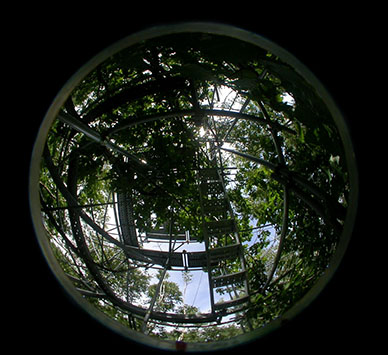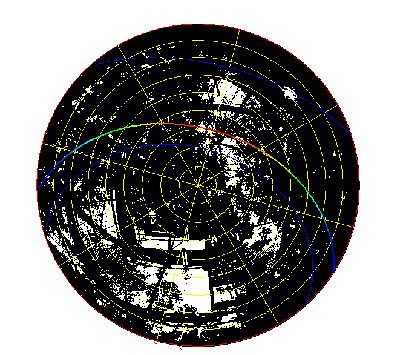Home > Research > Research Results > Research Results 2018 > Nitrogen distribution throughout the canopy can be explained by sunlight from sunflecks
Update:April 9, 2018
Main content starts here.
Nitrogen distribution throughout the canopy can be explained by sunlight from sunflecks
| Article title |
Canopy nitrogen distribution is optimized to prevent photoinhibition throughout the canopy during sun flecks |
|---|---|
| Author (affiliation) |
Mitsutoshi Kitao(a), Satoshi Kitaoka (b), Hisanori Harayama (a), Hiroyuki Tobita (b), Evgenios Agathokleous (a), Hajime Utsugi (b) (a) Hokkaido Research Center, FFPRI, Sapporo, Hokkaido, Japan. |
| Publication Journal |
Scientific Reports, SREP-17-43163, January 2018, DOI: 10.1038/s41598-017-18766-0( External link ) |
| Content introduction |
The higher photosynthetic capacity of trees is closely associated with a greater amount of leaf nitrogen. Leaves in the upper canopy, which receive abundant sunlight, accumulate larger amounts of nitrogen, whereas leaves in the lower canopy receive lower amounts of sunlight and thus accumulate less nitrogen. In this way, trees efficiently distribute nitrogen so that they can perform more photosynthesis as an entire canopy. Although light is essential for the growth of plants, excessive light harms plants due to photoinhibition. Even deep within the canopy, strong light may reach the lower leaves by streams of sunflecks. Accumulation of nitrogen in the leaves in the upper canopy is lower than that expected by the theoretical nitrogen distribution, which expects maximized photosynthetic carbon gains in the entire canopy. Conversely, nitrogen accumulation is higher than expected in the leaves in the lower canopy. Explanations for this phenomenon have been debated for long. Therefore, we estimated a model of nitrogen distribution that considers the effect of sunflecks where not all leaves in the canopy are susceptible to photoinhibition. This model agrees with the observed nitrogen distribution. Leaves in the lower canopy contain higher concentrations of nitrogen for maintaining photosynthetic efficiency while also avoiding photoinhibition due to sunflecks. To accurately estimate the growth of trees and carbon dioxide absorption in forests, it is necessary to consider differences in the photosynthetic capacity of leaves caused by nitrogen distribution in the canopy. By incorporating environmental stress as a factor that influences photoinhibition into the model, such as drought and low temperature, estimation of the accuracy of nitrogen distribution can be further improved. This model can be used as a tool for predicting forest growth affected by climate change in future.
A hemispherical photograph taken inside the canopy of a mature Japanese oak (23 m high) using a fisheye lens (left). When the sun passes through the white part of the image, sunflecks will stream. By combining such an image analysis with measured values of light in the upper canopy, it is possible to estimate the strength of sunflecks received by the leaves within the canopy.
|
Copyright © Forest Research and Management Organization. All rights reserved.


